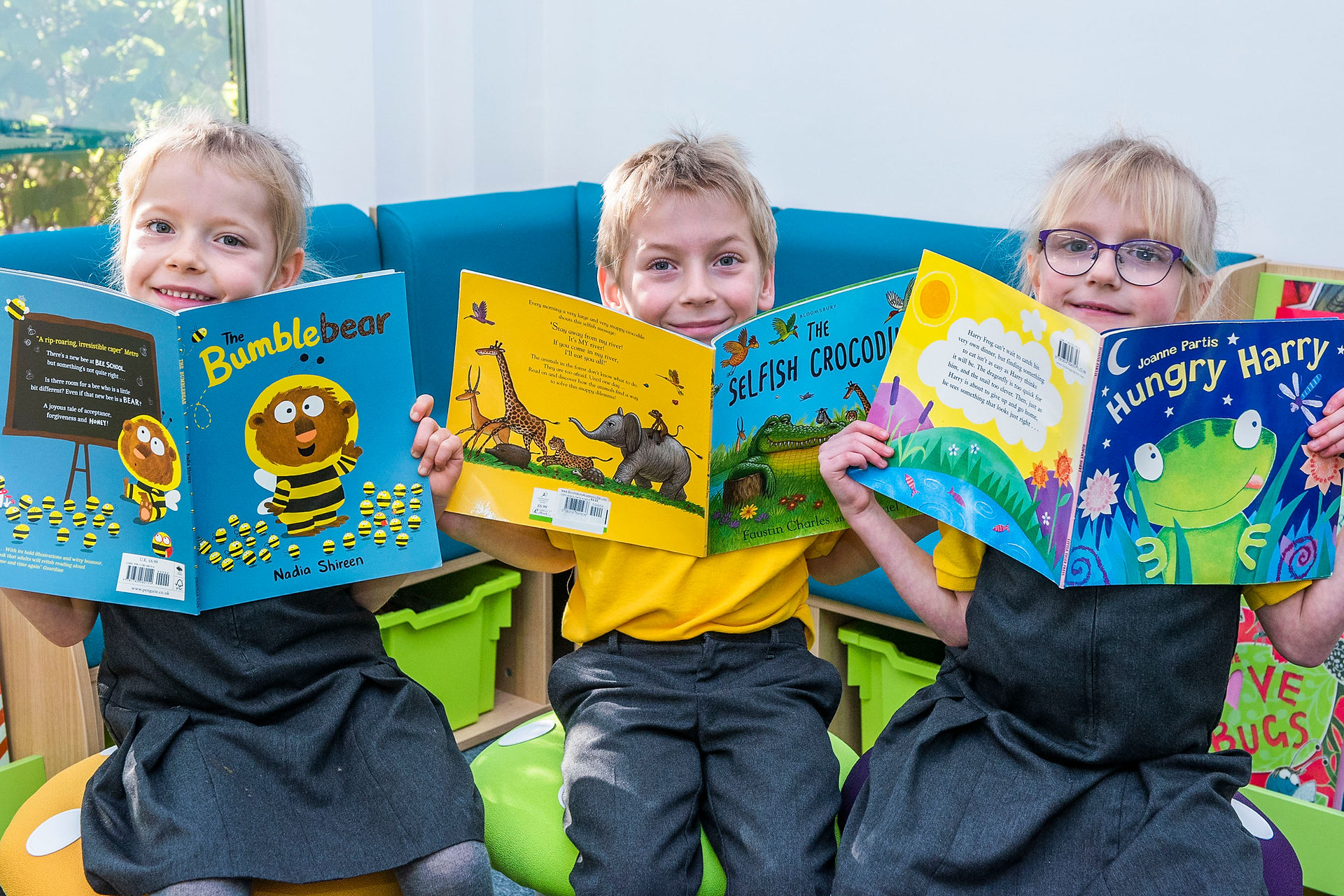
English
Reading
The ability to read and write is a key life skill that paves the way to success at school and in the world beyond. Phonics is a way of teaching children to read skillfully, and is a way of decoding written letters or spoken sounds.
In phonics, children are taught how to: recognise the sounds that each individual letter makes;
identify the sounds that different combinations of letters make – such as ‘sh’ or ‘oo’; and blend those sounds together from left to right to make a word.
Children can then use this knowledge to ‘decode’ new words that they see or hear. This is the first important step to learning to read.
To hear hour to pronounce the sounds, click here
At Eton Wick, we want to give the children all of the skills they need in order to develop into readers who are able to go on to read and understand any kind of text fluently and confidently, with enjoyment. We use a scheme called Read, Write Inc. to teach children de-coding, fluency and comprehension in Reception and Year 1. From Year 2 onwards, children read a range of texts both in small groups and as whole class to develop more complex comprehension skills, which are designed to help children to infer, summarise, question, clarify, predict and argue a point of view. The children are also taught to make connections between texts and their own experiences.
We want children to develop a rich vocabulary and a love for reading, and we encourage children to read as often as possible. Children will bring home a book, from the school reading scheme, which they should be encouraged to read on a daily basis. Children have the opportunity to visit our school library once a week. We have strong links with our local library in Eton Wick, and children are able to visit the library with their class during the course of the year.
Writing
At Eton Wick, we aim to equip children with the effective skills needed to write, be proud of their work and to see themselves as authors. We use The Power of Reading to support us in our planning and delivery to ensure that the teaching of writing is delivered in a creative, stimulating and cross-curricular way, linked to high quality texts.
Children are exposed to a range of different writing genres throughout the year, which have been specifically tailored for their year group. Books are chosen which often link with the termly topic in the class, enabling the children to make links across the curriculum. Through the cross-curricular teaching sequences, children are immersed in high quality texts so that they are continuously developing their language and the skills needed to produce their own high-quality pieces of writing.
We want our children to develop a rich and broad vocabulary, which they can use and develop within their writing, and build year on year. In addition to daily teaching, children are exposed to ‘Word of the Week’. Words are displayed in classrooms, and children are encouraged to challenge themselves to use them within their daily writing.
To stimulate creative writing, teachers use a wide variety of resources to motivate and enthuse young writers, including film, pictures and story books. Our Cornerstones Curriculum offers opportunities for cross-curricular writing.
The teaching of Spelling, Grammar and Punctuation (SPaG) is taught explicitly to children, ensuring that there are opportunities for children to embed their knowledge implicitly within their writing. Spelling patterns are taught from the second half of the autumn term in Year 1.
At Eton Wick, we use a cursive approach to handwriting. Cursive handwriting skills are taught and developed throughout Year 1 to Year 4. Different styles of handwriting can be seen displayed around school to ensure children are exposed to different fonts. Once children have shown evidence of consistent cursive script, they are awarded a Pen Licence, which is awarded in our weekly celebration assemblies.
Year Group Coverage: English Curriculum Maps
Phonic Information for parents
Set 1, Set 2 and Set 3 sounds and rhymes








